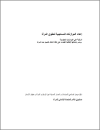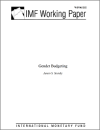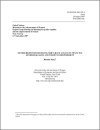FOUND 15
This paper by the Commonwealth Secretariat (1999) provides a rationale for the strategic goals of the Commonwealth Gender Budget Initiative at the national level and highlights the need for integrating a gender perspective in macroeconomic policies and budgets.
This publication intended for those who wish to better understand the links between gender equality, public policy formation and development financing.
The report, authored by Professor Diane Elson, a leading feminist economist, makes a significant contribution to the advocacy work on the transparency of budgets. It provides arguments for increasing the accountability of government budgets to women's rights.
A summary guide for policy makers, gender equality and human rights advocates" is a publication based on a report by Diane Elson "Budgeting for Women's Rights: Monitoring Government Budgets for Compliance with CEDAW" by UNIFEM 2006.
The report, authored by Professor Diane Elson, a leading feminist economist, makes a significant contribution to the advocacy work on the transparency of budgets. It provides arguments for increasing the accountability of government budgets to women's rights.
Budgeting for Women's Rights Monitoring Government Budgets for Compliance with CEDAW: summary..(Fr )
A summary guide for policy makers, gender equality and human rights advocates" is a publication based on a report by Diane Elson "Budgeting for Women's Rights: Monitoring Government Budgets for Compliance with CEDAW" by UNIFEM 2006.
A summary guide for policy makers, gender equality and human rights advocates" is a publication based on a report by Diane Elson "Budgeting for Women's Rights: Monitoring Government Budgets for Compliance with CEDAW" by UNIFEM 2006.
This IMF Working Paper examines how public processes can contribute to improving women's status. Gender budgeting, which refers to the systematic examination of budget programs and policies for their impact on women, has been tried in a range of countries in recent years.
This Commonwealth Secretariat publication provides a conceptual framework for work on gender responsive budgets, traces the evoluation of work in this area and provides information on country initiatives. This is a crucial resource for researchers, policy-makers and practitioners.
This paper uses examples from Australia and the Pacific Island Countries and Territorities to address the following questions:How can we assess a government's achievements in gender responsive budgeting? How can gender responsible budgeting be made sustainable in the face of change?









